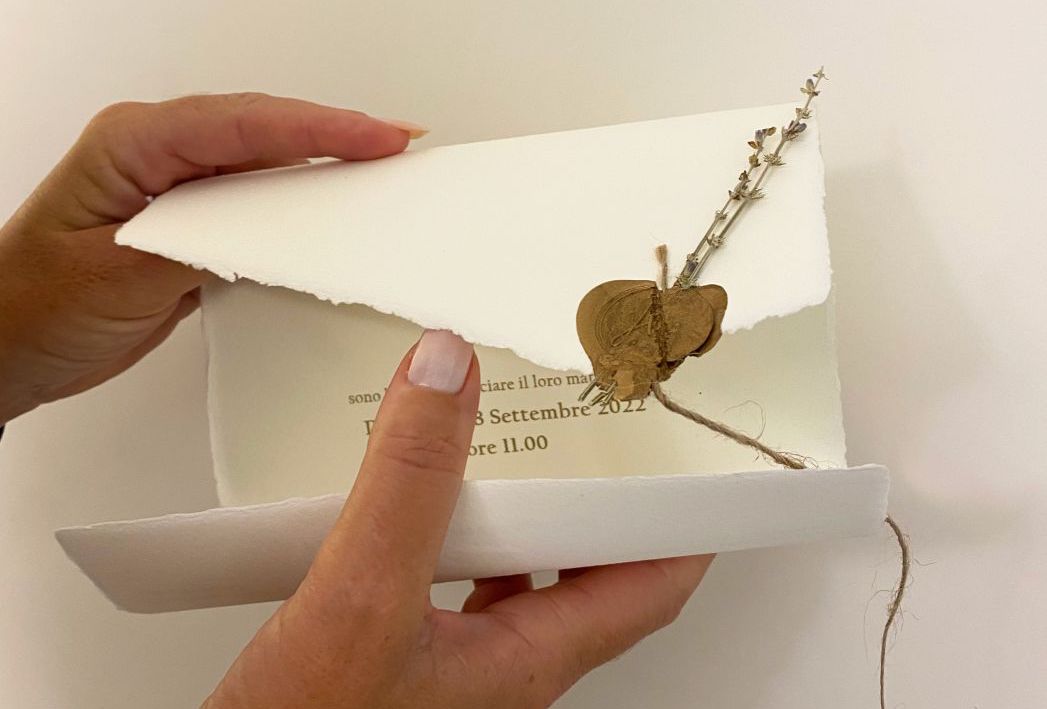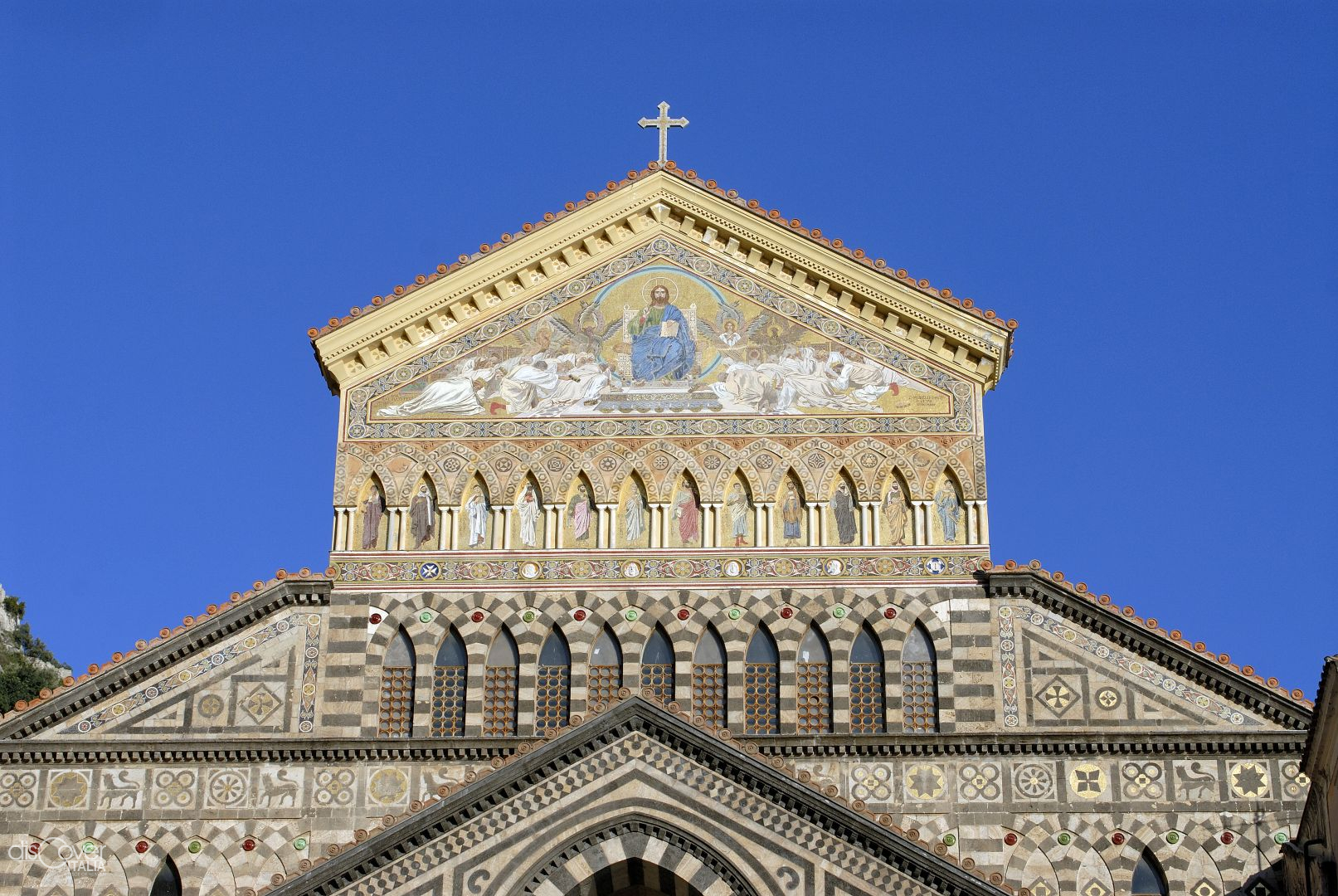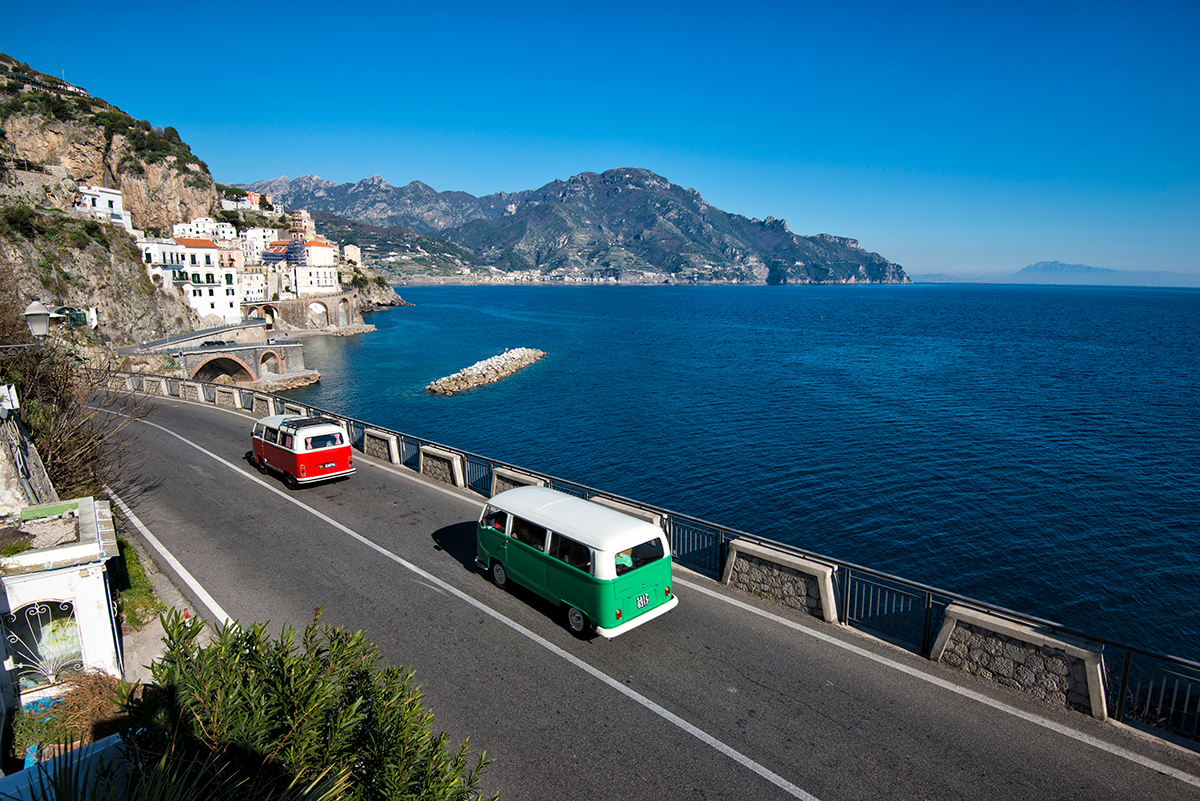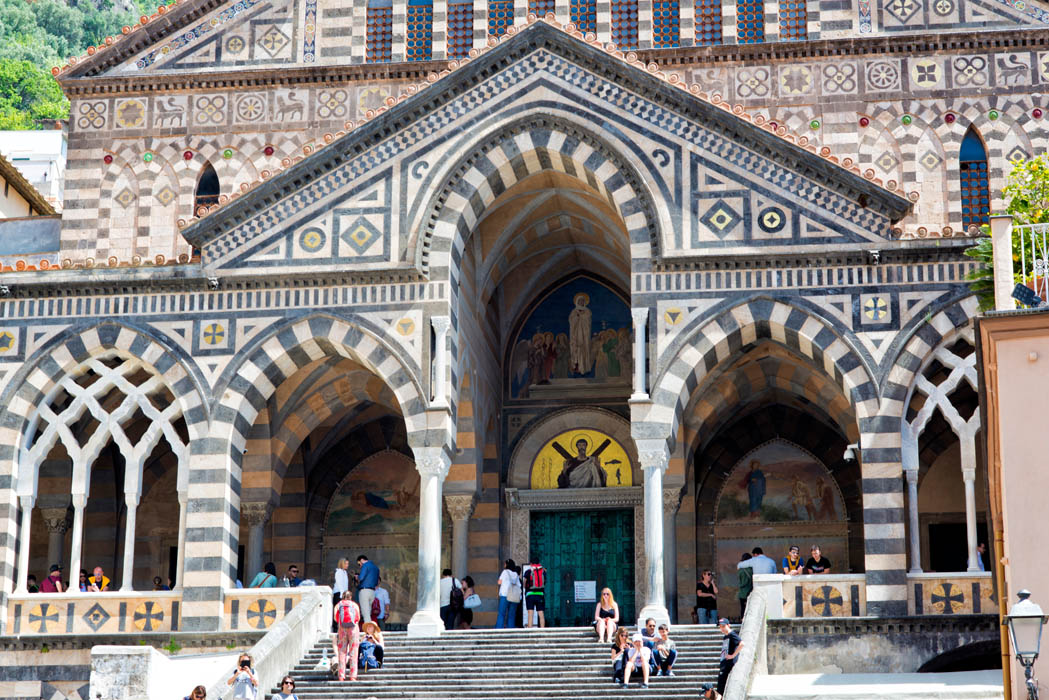A small territory for a great navy.
 Able to be honored in every age, on all the routes of the Mediterranean Sea. Therefore, that natural basin surrounded by the steep rocks, between the fjord of Furore and Amalfi, has been chosen as the navy base of the Republic and managed to win twenty-seven large galleons.
Able to be honored in every age, on all the routes of the Mediterranean Sea. Therefore, that natural basin surrounded by the steep rocks, between the fjord of Furore and Amalfi, has been chosen as the navy base of the Republic and managed to win twenty-seven large galleons.
Even its name, Conca dei Marini, was born not only from the physical conformation of the place but also from the deep, consolidated link with the sea of its people. It began with the foundation of the ancient Cossa, maybe by the Tyrrhenians, and then confirmed by the participation to the second punic war against the Carthaginians and to the social war, that time against Rome. Then the period of maximum splendor of trade with the advent of the Maritime Republic until its decine, from which Conca recovered under the Angevins, rebuilding a strong network of commercial relations, which guaranteed its wealth for several centuries. The art was the heart of all the activities, where there was a considerable movement of ships and goods, including local products: wood of Agerola, fruits from the flourishing plantation above the bay and the silk stockings in which the women of Conca had specialised. And nearby, since 1700 the tuna fishery was implanted, the only one of the Coast, in operation until the middle of the 20th century. Everything concentrated where there are still today the docking and the most important and popular beach, Marina di Conca, loved by the international jet set since the 60s. The ancient fishermen’s hamlet opens onto the lido, with the houses above the tool sheds, located on the lower in order to protect the houses from the contact with the sea. There, the chapel of Santa Maria della Neve stands, reference point for seafarers. A bas-relief of the Virgin with Child on the altar is of considerable importance. It was brought by the sailors of Conca from Constantinople.
From above, there are other houses with their white walls, of lime, among the cliffs dotted with lemon groves and luxuriant gardens. They are linked to each other and to the hamlet at sea level by the inevitable steps in every corner of the Coast.
Although small, the territory of Conca houses several churches, each one with its peculiarities and overlooking panoramas of extraordinary beauty, like the viewpoint over the sea of Punta Vreca, in a shape of a ship. The visitors of the church of San Pancrazio can admire. That church is with three naves and three apses, different chapels, ancient centre of devotion of Madonna del Carmelo. When in June 1543, the Turks landed in Conca, devastating the village, they also desecrated the church of San Pancrazio, which remained closed to worship for a long time. The legend shows in an olive tree grove nearby, the place where witches (in dialect “janare”) gathered. Known as church of Saint Antonio da Padova, patron saint of Conca, but named after San Giovanni Battista, the parish church of Penne neighbourhood is located on a cliff overlooking the entire bay. The building has a spacious Baroque façade, on which the image of the patron stands out, as well as a campanile surmounted by a cusp of polichrome majolica. In the same district, immersed in the green of olive and lemon groves, there is the church of San Michele Arcangelo, pre-existing from the 13th century and composed of a hall closed and a flat apse. The floor, the wooden choir, the altar, the marble decorations and the fine paintings of the Neapolitan school adorning the four chapels are of the eighteenth century. The campanile culminates in a cylindrical cell with six single windows. In the same area, there is also the chapel of San Cristoforo, from 1300, with an ancient fresco above the main altar. In a panoramic position, the monumental complex stands out. It is formed with the church of Santa Maria di Grado, where the relic of Saint Barnaba’s head is preserved and, on the right hand side, the Conservatory of Santa Rosa da Lima from 1681, which housed a monastery of Dominican nuns until the beginning of the 20th century. In Olmo square, Conca main square embellished with elms, the chapel of Immacolata dates back to the 17th century. With a strong Spanish taste, it consists of a hall covered by a barrel vault with lunettes decorated with paintings in stucco, while the apse shows medallions representing Saint Antonio and Saint Domenico.
Among the most suggestive places, Capo di Conca is a small promontory covered by a rich vegetation overlooking the sea and dominated by the Saracen Tower (Torre Saracena) or White Tower (Torre Bianca), built in the 16th century to protect the coast from the Saracen attacks by the order of the viceroy Don Pedro de Toledo. With a square plan, recently restored, it is a property of the Municipality, which destined it as a museum. You can get there by walking through a pleasant and very panoramic path.
© ALL RIGHTS RESERVED











Comments powered by CComment